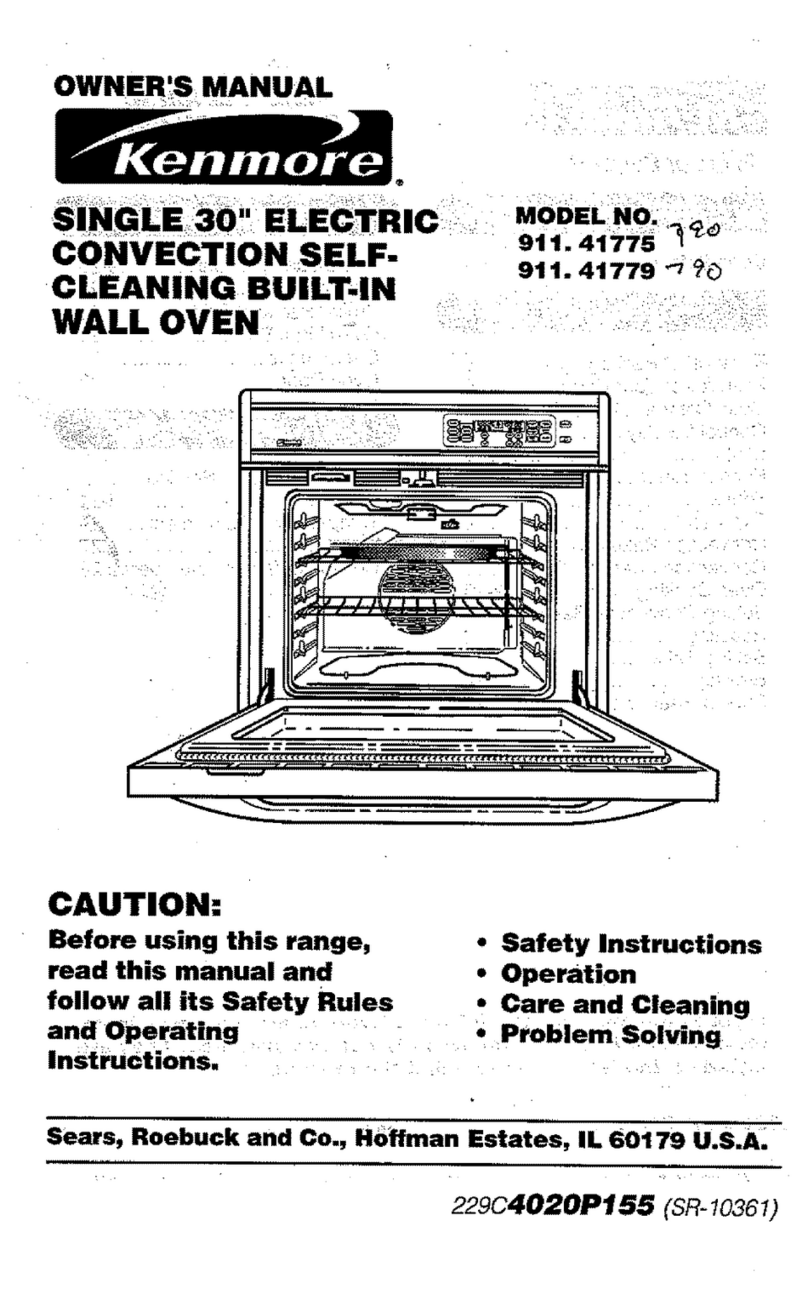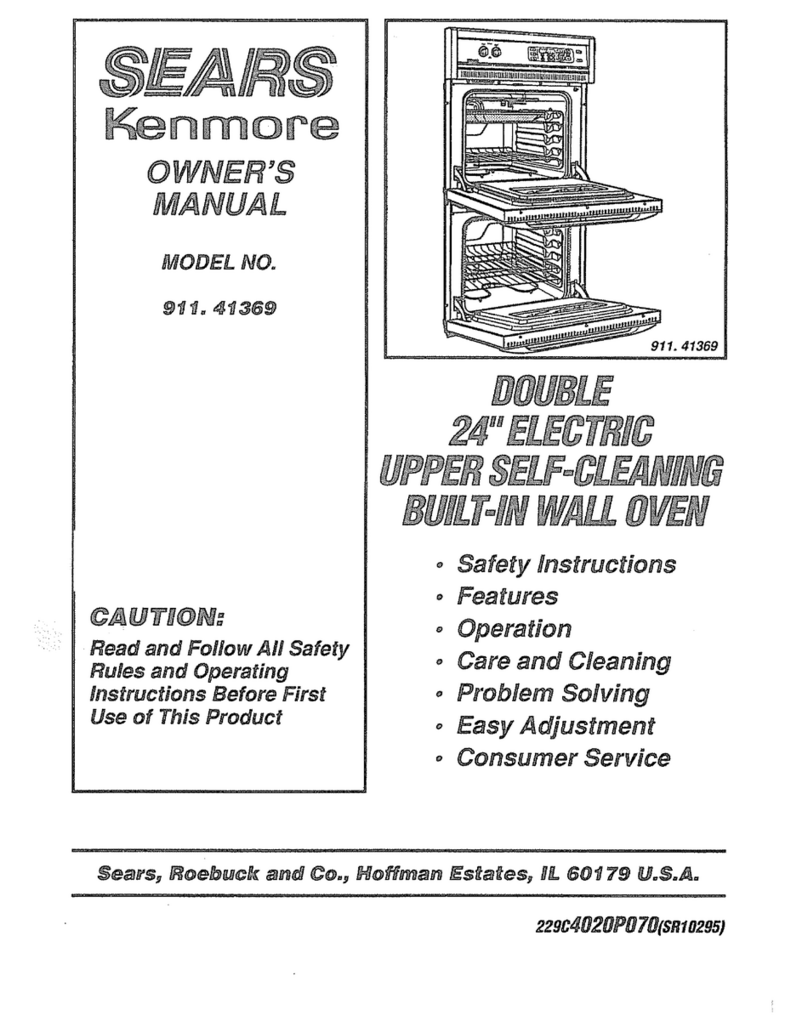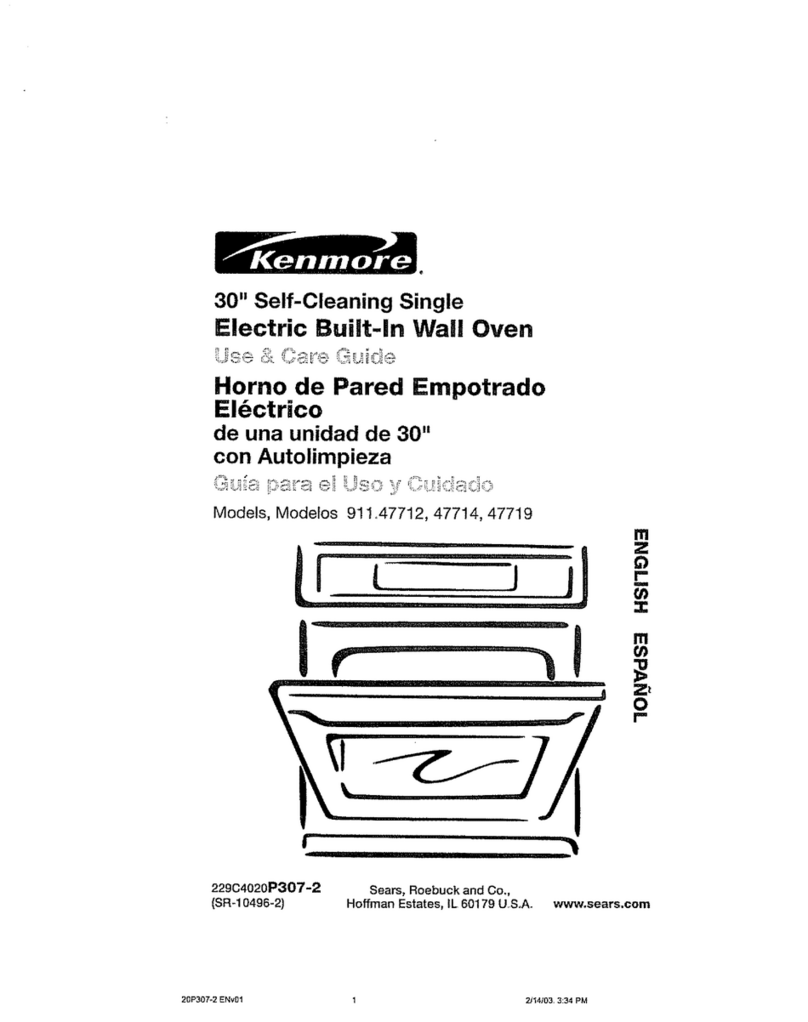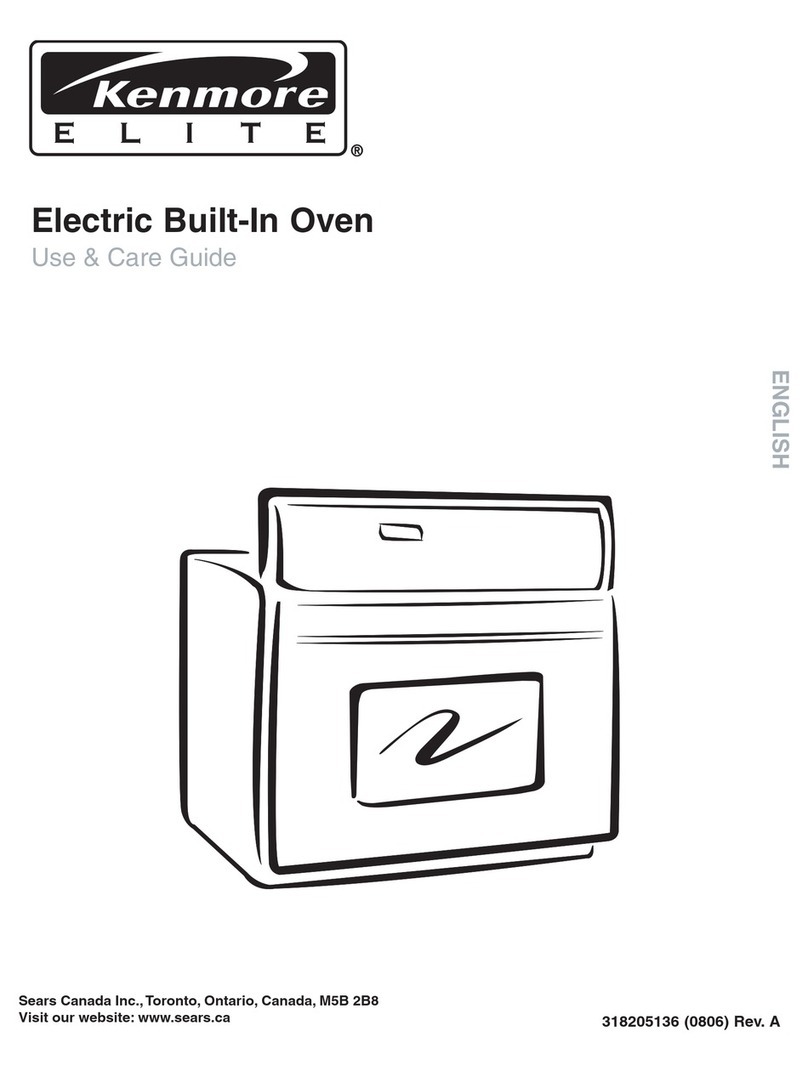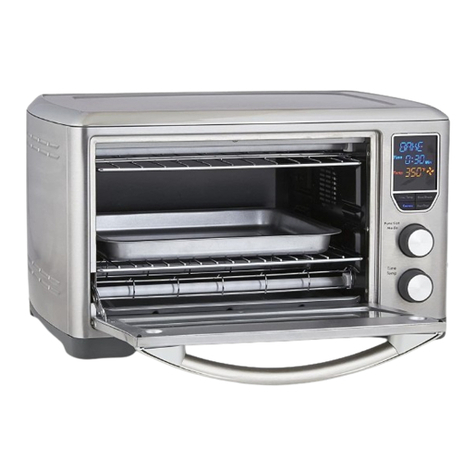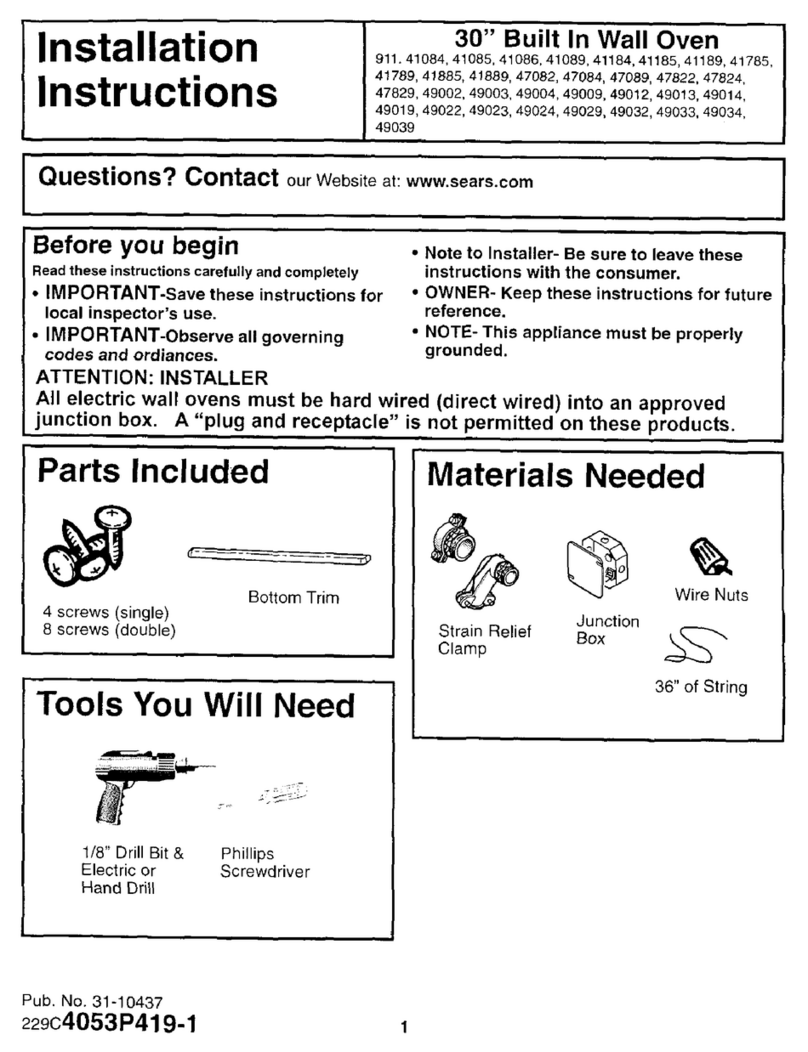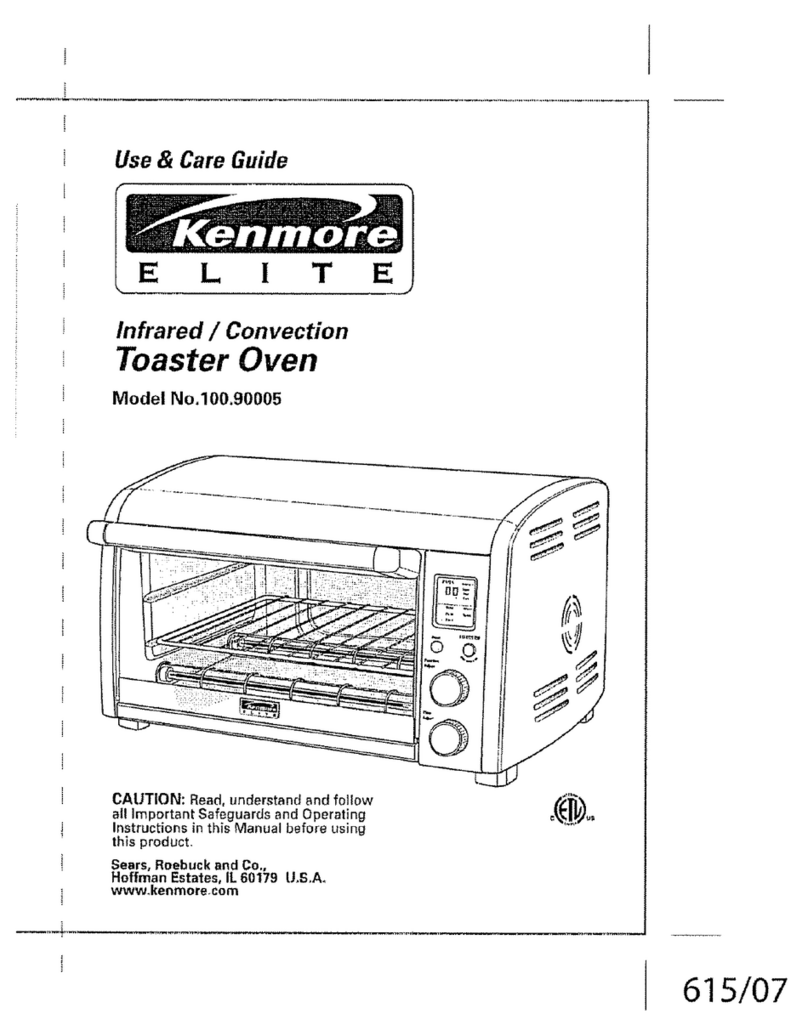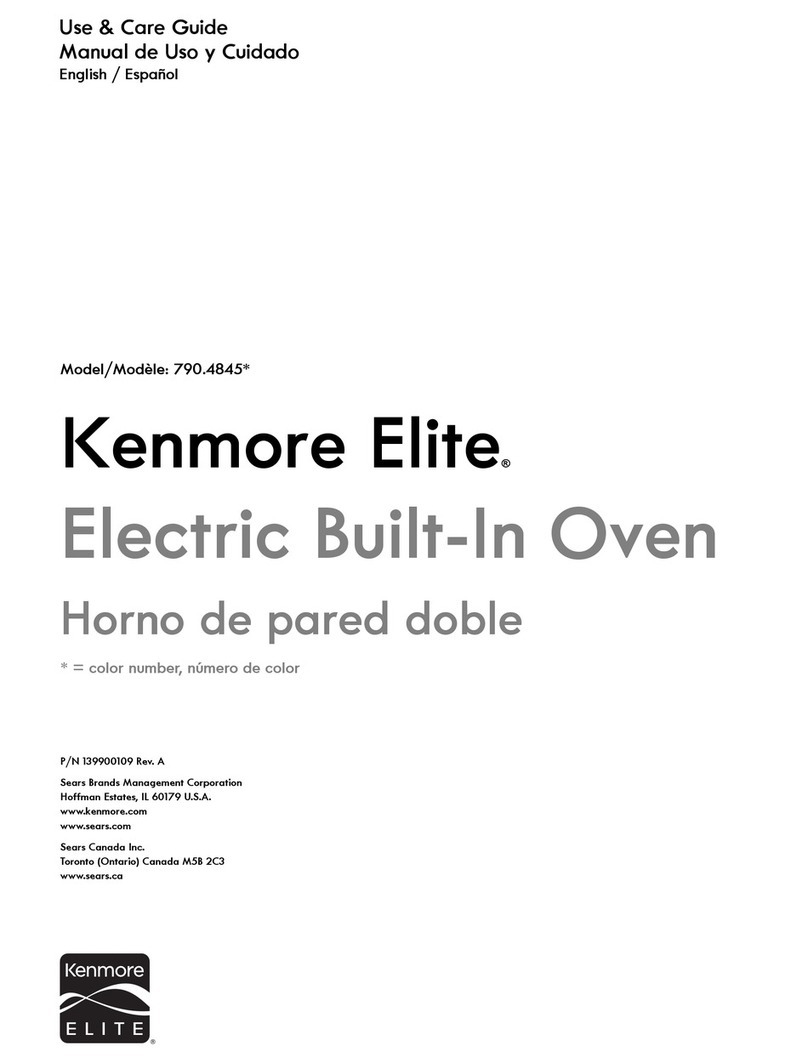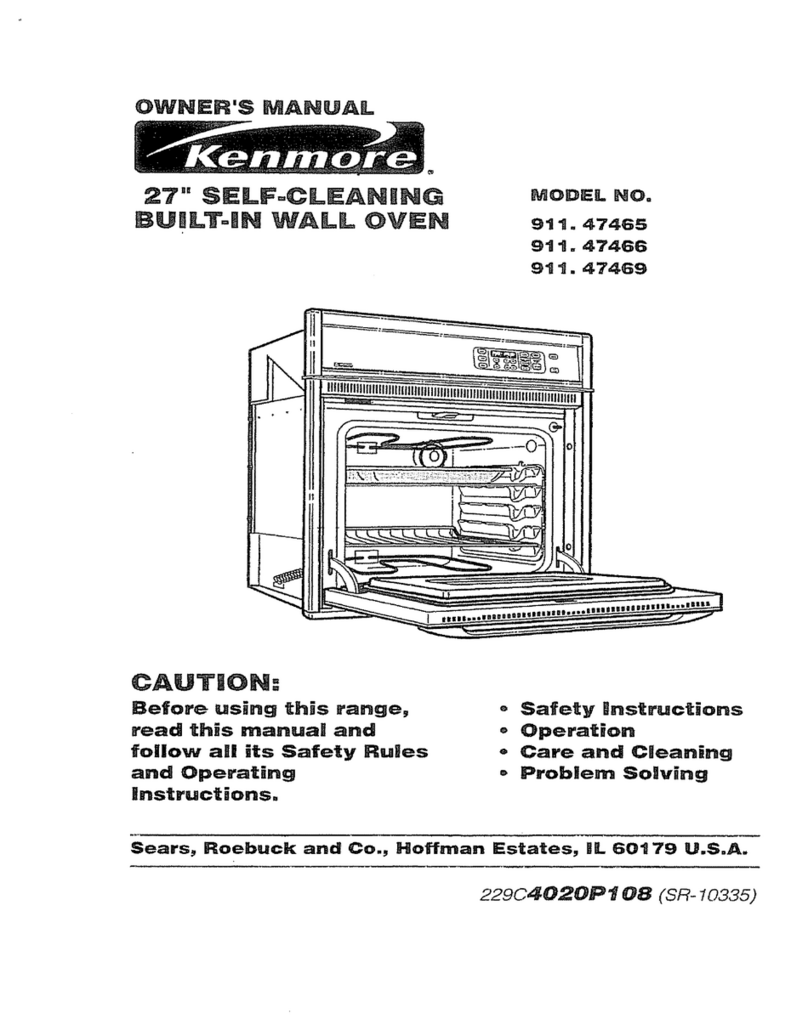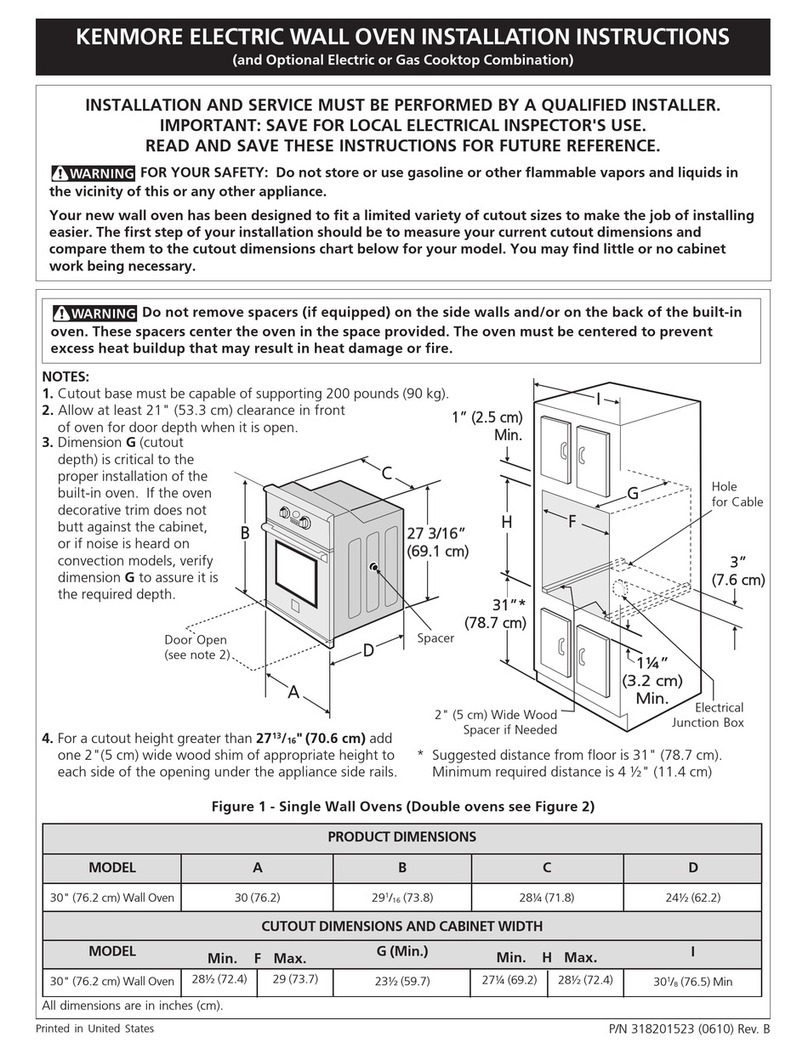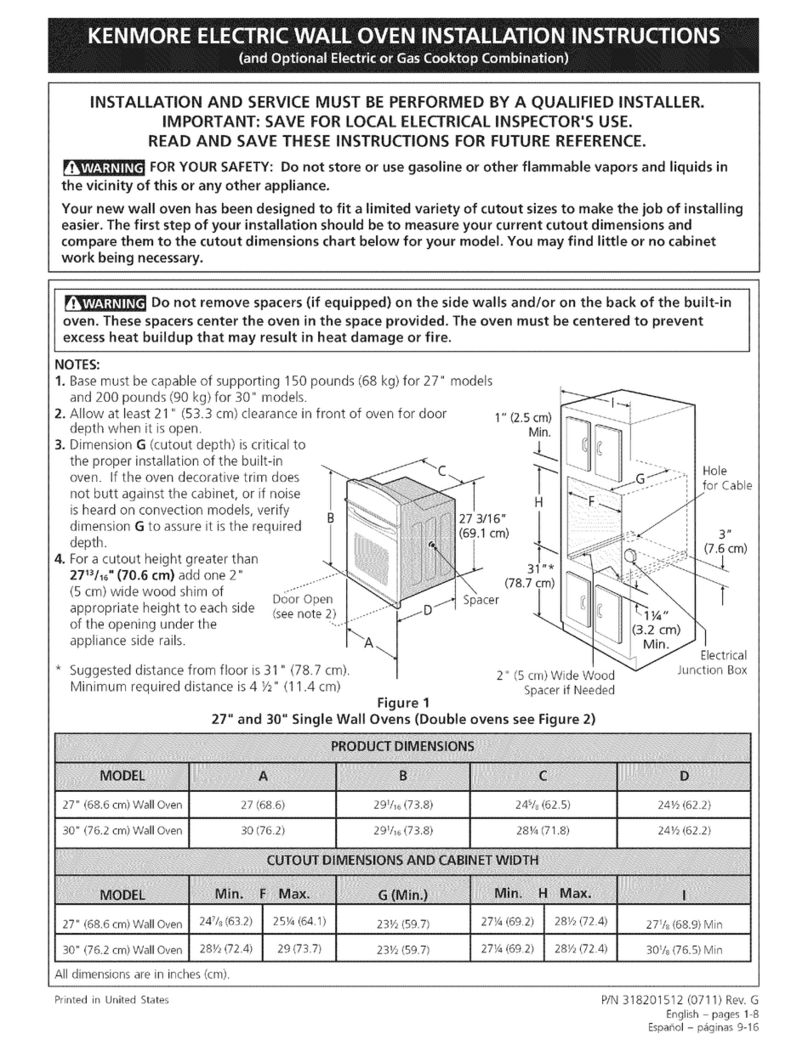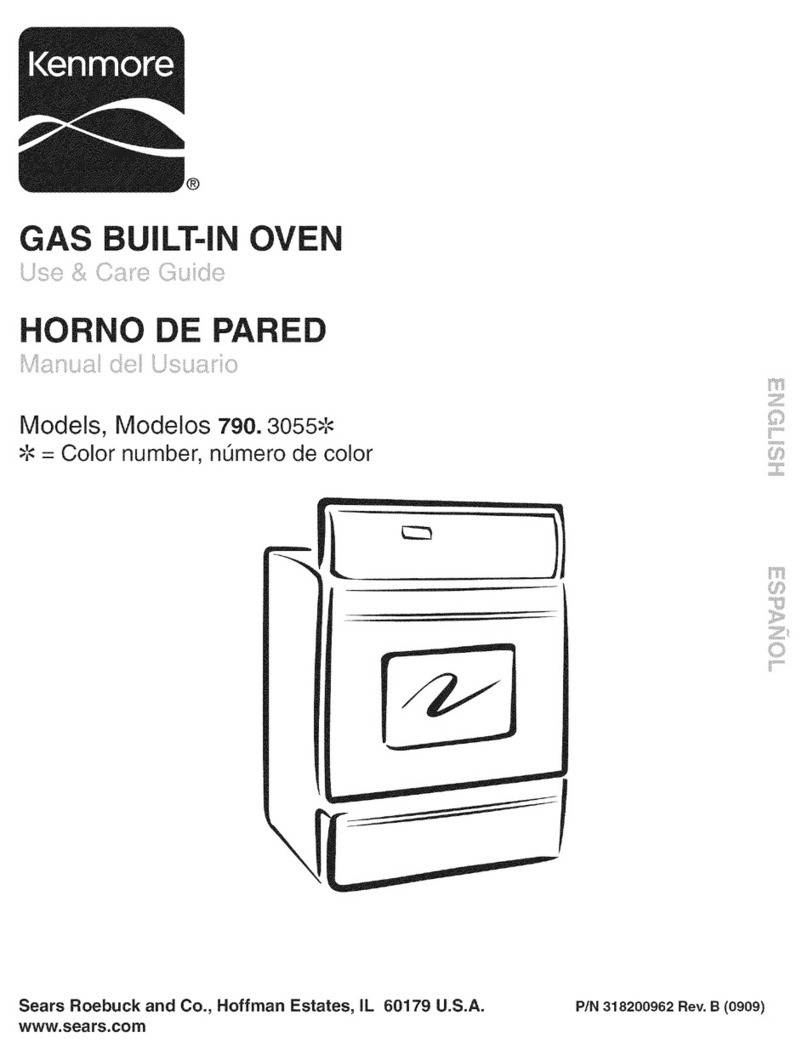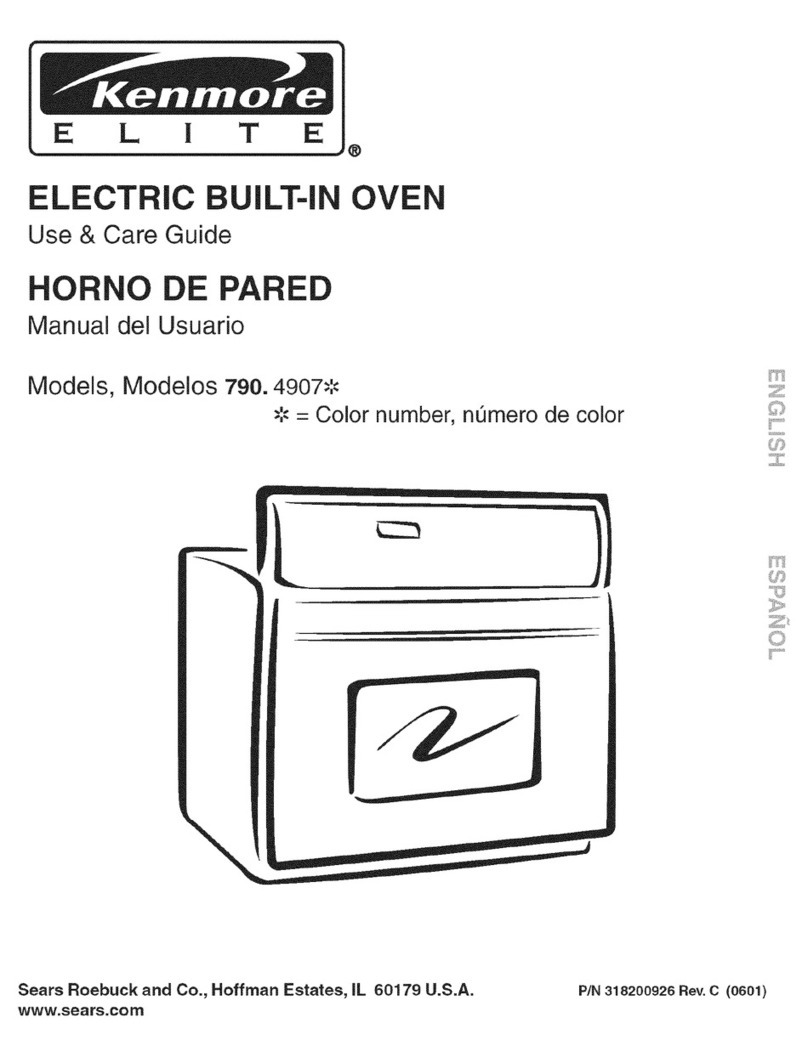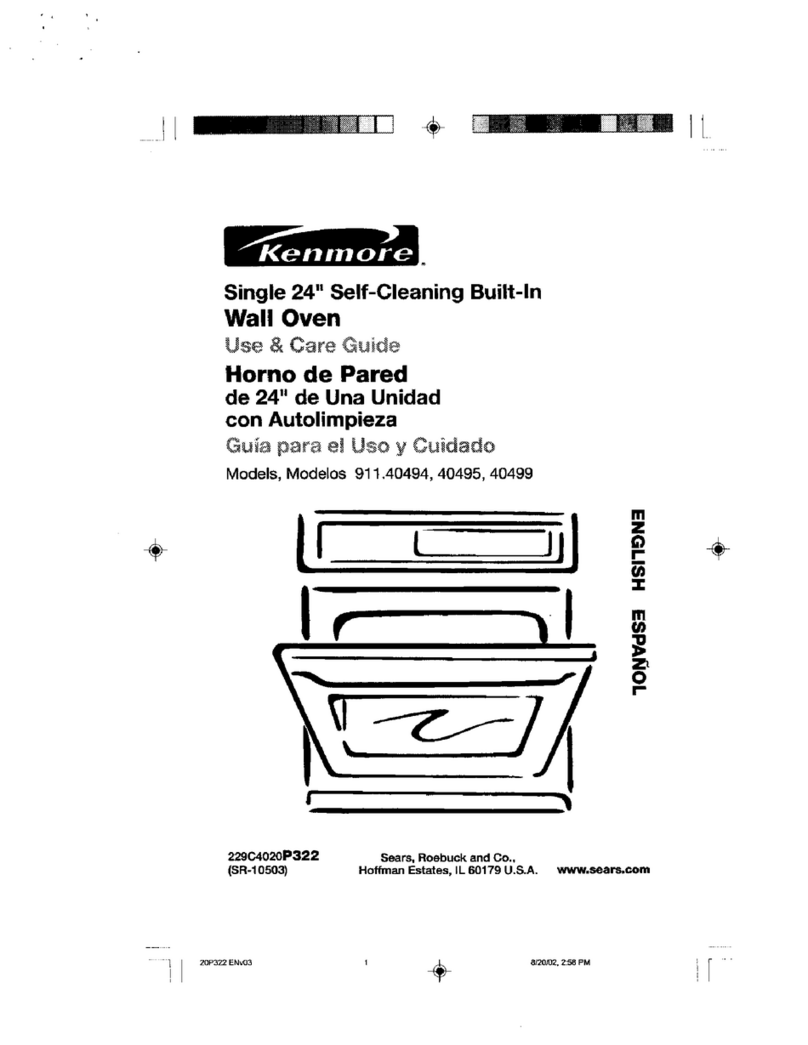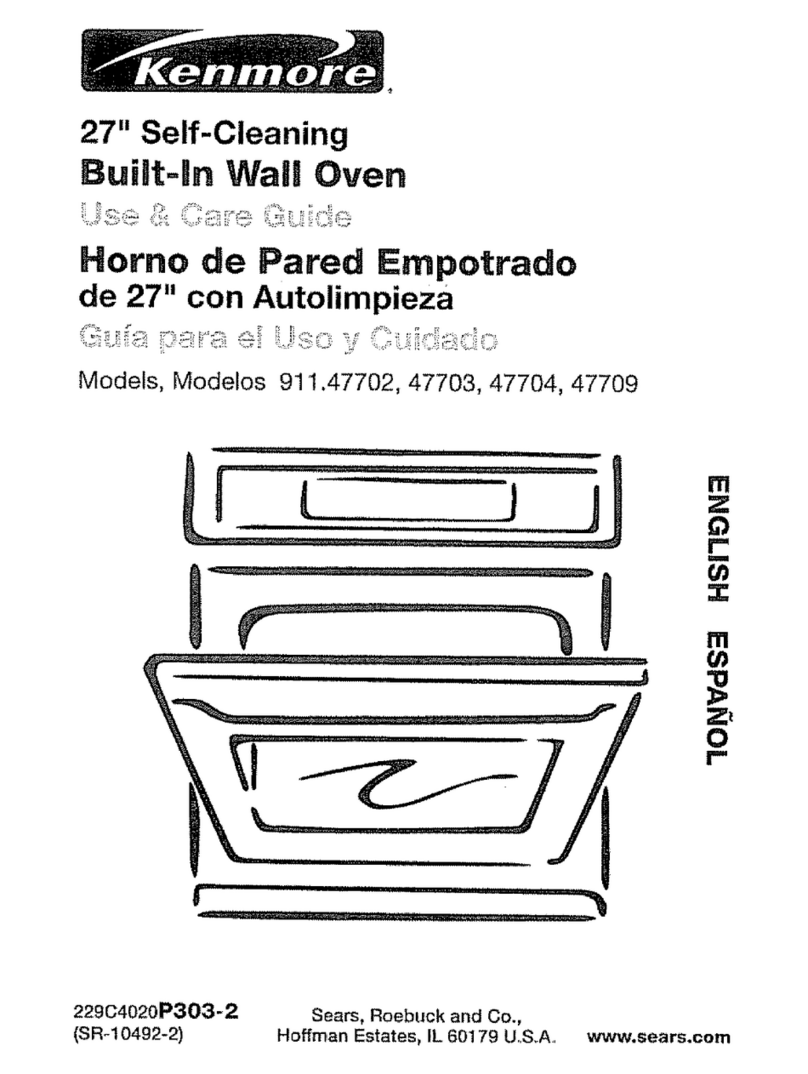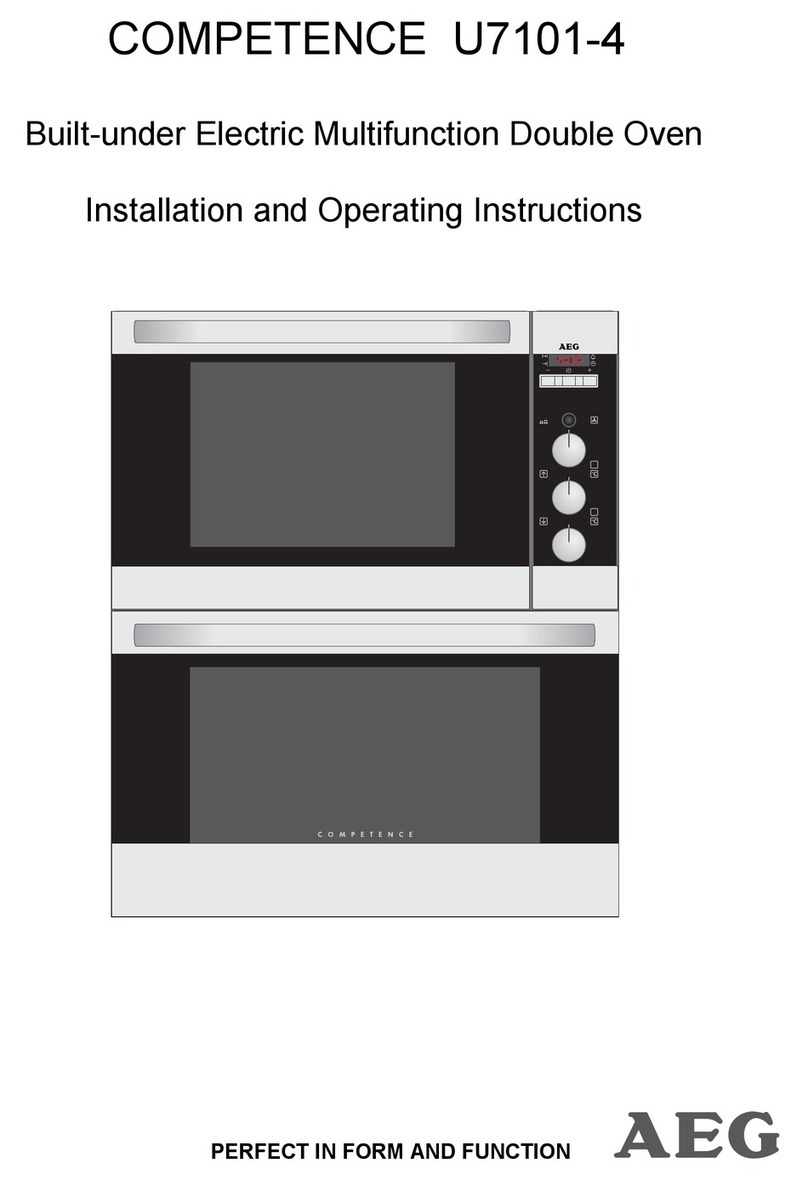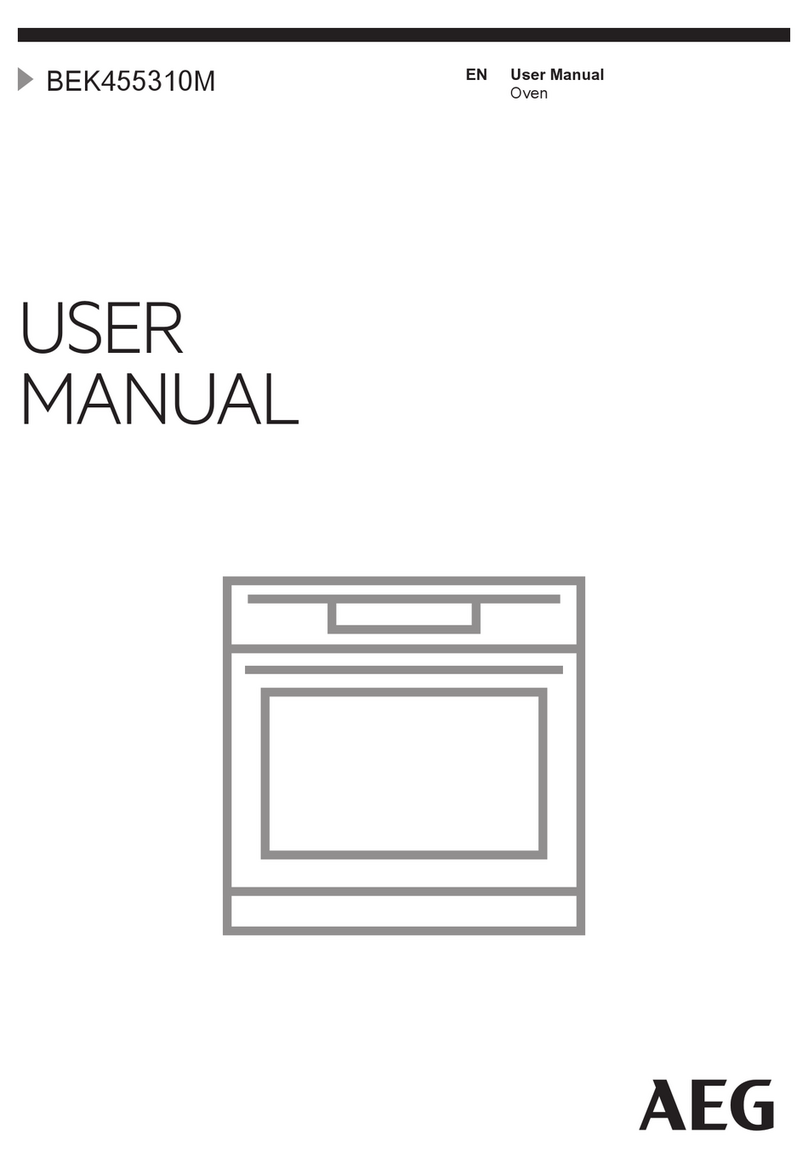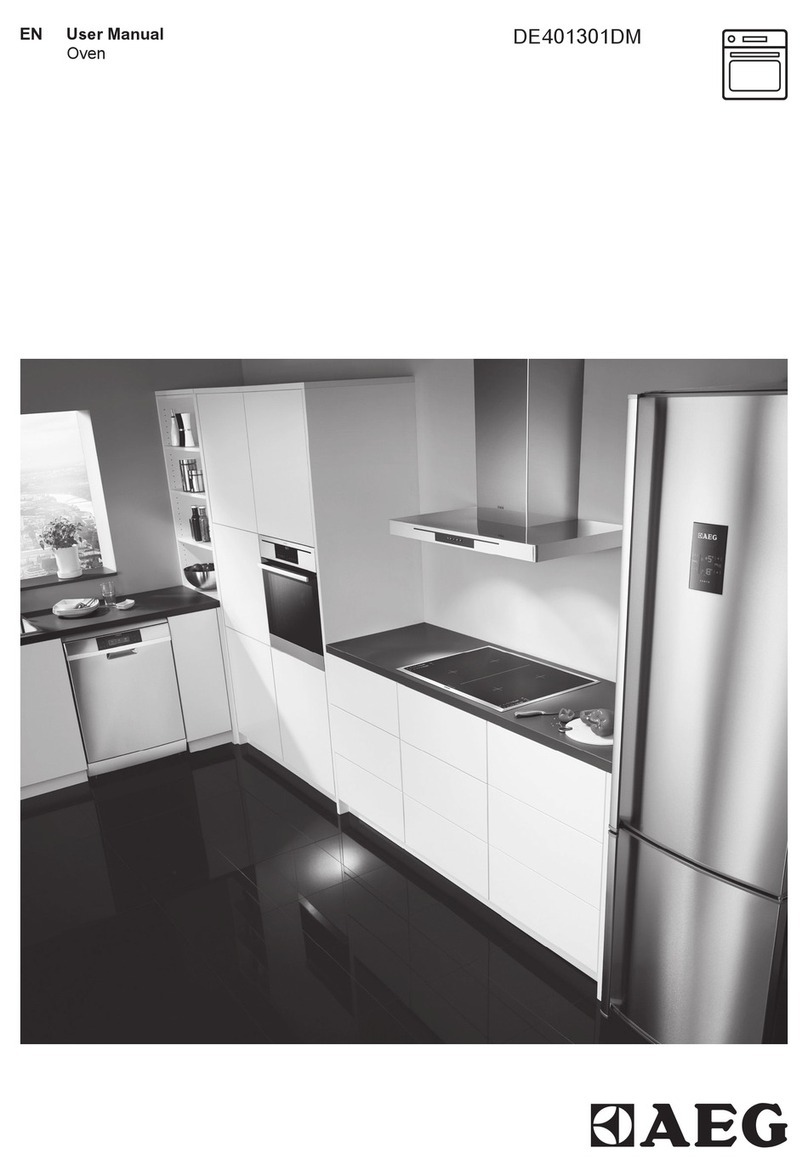i i i ii iiiiiiiii iiiii iiiiii ii !!i !iiii Jii!i ii i! ii ii iiiiiiiiiiiiii!i
Use a reliable recipe and accurately measure fresh
ingredients. Carefully follow directions for oven
temperature and cooking time. Preheat oven if
recommended.
Use the correct rack position. Baking results may be
affected if the wrong rack position is used.
• Top browning may be darker if food is located toward
the top of the oven.
• Bottom browning may be darker if food is located
toward the bottom of the oven.
• When using two racks for baking, allow enough space
between the racks for proper air circulation. Browning
and cookingresults will be affected ifair flow is blocked.
Cookware material plays an important part in baking
results. Always use the type and size of pan called for in the
recipe. Cooking times or cooking results may be affected if
the wrong size is used.
Shiny metal pan reflects heat away from the food,
produces lighter browning and a softer crust. Use shiny
pans for baking cakes or cookies. For optimum baking
results, bake cookies and biscuits on a flat cookie
sheet. If the pan has sides, such as a jelly roll pan,
browning may not be even.
•Dark metal pan or a pan with an anodized (dull)
bottom absorbs heat, produces darker browning and a
crisper crust. Use this type of pan for pies, pie crusts or
bread.
* If using oven-proof glassware, or dark pans such as
Baker's Secret reduce the oven temperature by 25°F
except when baking piesor bread. Use the same baking
time as called for in the recipe.
Allow hot air to flow freely through the oven for optimum
baking results. Improper placement of pans in the oven will
block air flow and may result in uneven browning. For
optimum browning and even cooking results:
• Do not crowd a rack with pans. Never place more than
one cookie sheet, one 13xgx2-inch cake pan or two
9-inch round cake pans on one rack.
• Stagger pans when baking on two racks so one pan is
not directly over another pan.
•Allow one totwo inches between the pan and the oven
walls.
Check the cooking progress at the minimum time
recommended in the recipe. If necessary, continue checking
at intervals untilthe food isdone. Ifthe oven door isopened
too frequently, heat will escape from the oven; this can affect
baking results and wastes energy.
If you add additional ingredients or alter the recipe,
expect cooking times to increase or decrease slightly.
ii !iiii ii ii !iii i i!ii!iii!ii iii!iii i i !i!iiiiii! !i!iiiiiiiiii ir iiiii
Roasting isthe method forcooking large, tender cuts of meat
uncovered, without adding moisture. Most meats are
roasted at 325°F. It is not necessary to preheat the oven.
Use tender cuts of meat weighing three pounds or more.
Some good choices are: Beef rib, ribeye, top round, high
quality tip and rump roast, pork loin roast, leg of lamb, veal
shoulder roast and cured or smoked hams.
Season meat, if desired, either before or after roasting. Rub
into the surface of the roast if added before cooking.
Place the meat fat-side-up on a rack in a shallow roasting
pan. Placing the meat on a rack holds itout of the drippings,
thus allowing better heat circulationfor even cooking. As the
fat on top of the roast melts, the meat is basted naturally,
eliminatingthe need for additional basting.
The cooking time is determined by the weight of the meat
and the desired doneness. For more accurate results, use
a meat thermometer. Insert itso the tip is inthe center ofthe
thickest part of the meat. It should not touch fat or bone.
Remove the roast from the oven when the thermometer
registers the desired doneness.
NOTE: For more information about food safety, call
USDA's Meat & Poultry Hotiine at 1-800-535-4555. For
cooking information write to the National Live Stock and
Meat Board, 444 North Michigan Avenue, Chicago,
Illinois60611.

